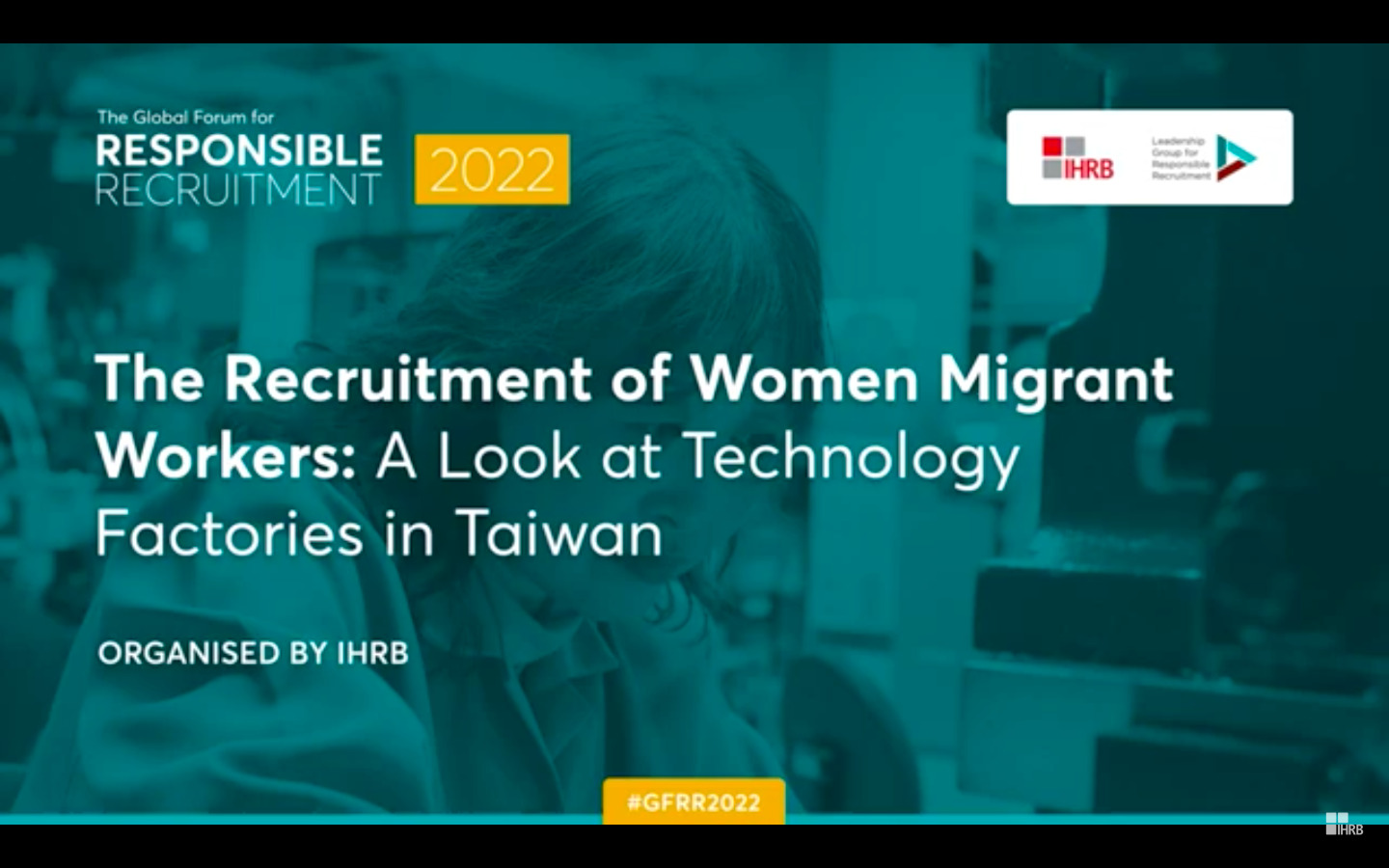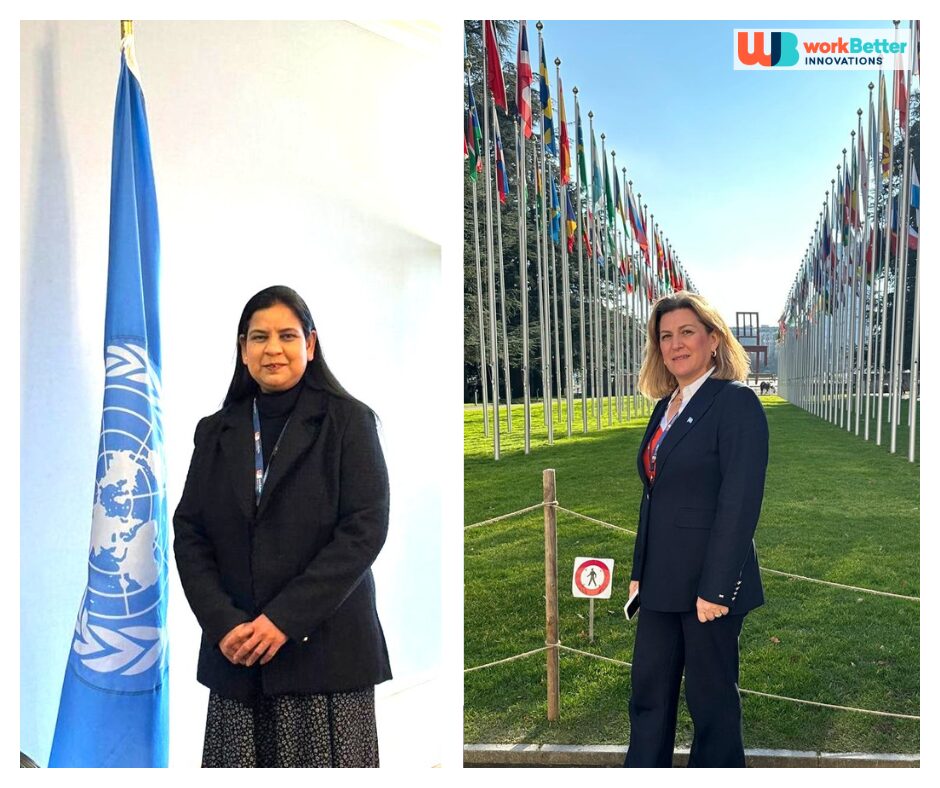2 November 2022. On the opening day of the Global Forum for Responsible Recruitment (GFRR) 2022, our Executive Director Dr Bonny Ling was invited to bring her leading academic and business insight in a panel discussion titled Recruitment of Women Migrant Workers: A Look at Technology Factories in Taiwan.
She was joined by Pamela Wood, the Human Rights and Responsible Supply Chain Manager at Hewlett Packard Enterprise, and Maria Gorsuch-Kennedy, Cisco’s Supply Chain Sustainability Director, both of whom are specialists in the private sector in responsible supply chains and human rights. As such, the panel reflected the intersection between the private and the public sectors needed for meaningful change.
KEY QUESTIONS
- Why is change needed?
- What are the changes that could realise the UN Sustainable Development Goal (SDG) 8 of decent work and sustainable economic growth?
- And a key question for our topic: why is a gendered lens in the migrant labour recruitment important?
According to a new report published by the International Labour Organization (ILO) and the International Organization for Migration (IOM), women are shown to face higher rates of human rights violations, from sexual harassment to pregnancy discrimination, wage inequity, and lack of contract transparency. The tech sector, in particular, is flagged as a high-risk area for women due to a lack of awareness of their rights violation and implementation of women’s employment rights within this space.
BACKGROUND TO TAIWAN’S MIGRANT WORKER SECTOR
Dr Bonny Ling delivered the first part of the talk which centered on the background of labour migration in Taiwan. Her wide-angled perspective ranged from general statistics to more specific case studies.

[Copyright Bonny Ling – still taken from the GFRR’s Youtube channel]
She explained that while the number of migrant workers to Taiwan is approximately equal between men and women, it is mostly women in the domestic care sector. Therefore, most of our understanding on violations of their employment rights is focused on the domestic care sector.
[Copyright Bonny Ling – still taken from the GFRR’s Youtube channel]
Still, almost 30% of female migrants work in industry, including the high-tech and electronics sector, and it is important that we also look at their rights violations in these areas of employments that are traditionally male-dominated.
THE ‘BLIND SPOT(s)’
Dr Ling called this ‘a blind spot’ in Taiwan and women’s rights – a theme that was frequently revisited during the discussion. Although around 40 % of Taiwanese legislators are female, we do not see similar figures in top corporate leadership in Taiwan.
Another such ‘blind spot’ is the legal framework in Taiwan which allows the charging of recruitment fees and recruitment-related costs, putting migrant workers at high risk of forced labour. This, as Cisco’s Maria Gorsuch-Kennedy emphasised, conferred a false understanding to companies operating in Taiwan that they abide by international standards on business and human rights. While these practices may be legal in Taiwan, companies face the risk that their goods may be denied access to global markets.
LOOKING AHEAD – POSITIVE ACTION
“What can companies do?” was a question asked by the event moderator, Laura Murphy, Global Director at the International Center for Research on Women (ICRW) Advisors.

[Copyright Pamela Wood – still from GFRR’s Youtube channel]
As the world’s largest producer of advanced electronic microchips, Taiwan has an opportunity to set the human rights agenda for its large web of suppliers. The role of women migrant workers in the process of advancing this agenda should be leveraged, as their skills and labour are indispensable to the tech sector.
This links to another key aspect highlighted by Pamela Wood, namely the importance of intersectionality in addressing migrant workers’ inequality. The problems faced by women migrant workers often overlap with those of other vulnerable groups. The discussion came back full circle at the end with Dr Bonny Ling’s remark that:
“We must identify where the blind spots are…This is just a first discussion, we must keep on talking, find these spaces where we can put our brains together and find the levers of change”
Only through a committed collaboration between the private and the public sectors with workers’ engagement at the front, can we see the SDGs turned from an ideal into a reality for all.






